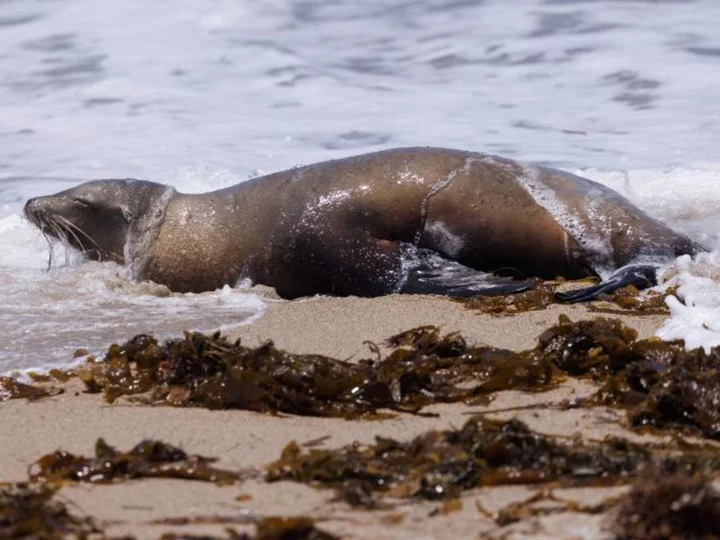Ahead of the Fourth of July holiday, public health officials in Los Angeles are advising beachgoers to avoid sea lions that have been sickened by toxins from large algae blooms coating California beaches.
In a Friday Facebook post, the Los Angeles County Department of Beaches and Harbors advised beachgoers to stay at least 50 feet away from sick sea lions and call the Marine Mammal Care Center or the California Wildlife Center if they see one.
More than 100 sea lions have likely been poisoned by domoic acid, a neurotoxin produced by large algae blooms, according to a joint news release from the Department of Beaches and Harbors, the Department of Public Health, and the Department of Animal Care and Control.
The number of sickened animals is higher than previous years and is expected to increase over the Independence Day holiday, according to the release.
Symptoms of domoic acid poisoning in sea lions also include unusual side-to-side head movements and holding their head extended for fixed periods of time, the Marine Mammal Care Center said. The center notes poisoned sea lions can behave unpredictably and might be either aggressive or lethargic and unresponsive.
The neurotoxin enters the food chain when plankton eat the algae, according to the news release. It becomes more concentrated as it moves up the food chain. Sea lions and dolphins often become poisoned after eating contaminated fish, while humans face the largest threat from contaminated shellfish, the release says.
The increase in algae and resulting increase in domoic acid poisoning may be linked to climate change, experts say. This type of algae can bloom fast when there are changes to the amount of light and nutrients available, CNN previously reported.
The Marine Mammal Care Center is caring for more than 100 animals, many of them sea lions with poisoning from domoic acid.
"Although you may want to help, the best and safest way to assist is to stay away and report the sick animal immediately," said Marcia Mayeda, director of the Los Angeles County Department of Animal Care and Control.
The Marine Mammal Care Center has established a temporary care facility to help with the spike in sick sea lions.
"We are working closely with the [Marine Mammal Care Center] to ensure they have the necessary resources at their short-term beach care center," Department of Beaches and Harbors director Gary Jones said in the release. "We hope that beachgoers will give the rescuers and their patients plenty of room, even when the beach is crowded."
The wave of illness isn't limited to Los Angeles -- or to sea lions. Just north in Santa Barbara and Ventura counties, wildlife rescuers have responded to more than 100 dead sea lions, 100 dead dolphins and 300 live sea lions all with symptoms of domoic acid poisoning, CNN previously reported.
On June 16, the California Department of Public Health issued a health advisory for "sport-harvested mussels, clams, or scallops from Santa Barbara County" due to "dangerous levels of demoic acid." The warning does not apply to commercially harvested shellfish, which is subject to mandatory testing for toxins. The department also noted that cooking does not destroy the neurotoxin.
In humans, symptoms of demoic acid poisoning, also called amnesic shellfish poisoning, can set in anywhere from 30 minutes to 24 hours after eating contaminated seafood, according to the news release.
Mild cases of the poisoning can result in vomiting, diarrhea, abdominal cramps, headache and dizziness. In severe cases, patients may experience trouble breathing, confusion, disorientation, cardiovascular instability, seizures, coma and even death, according to the news release.

